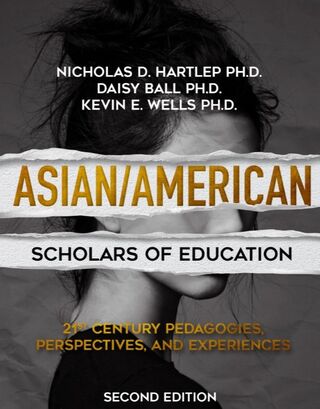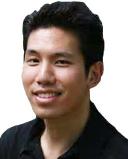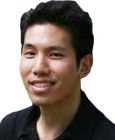Education
How Can We Support Asian Americans in Higher Education?
A new book honors Asian/American scholars in education.
Posted August 23, 2021 Reviewed by Devon Frye
Asian/Americans are a diverse group of individuals. And in higher education, especially among the most distinguished academic posts in education, they remain underrepresented.
A new edition of a book edited by Nicholas D. Hartlep, Daisy Ball, and Kevin E. Wells titled Asian/American Scholars of Education: 21st Century Pedagogies, Perspectives, and Experiences includes a collection of essays and national data analyses that honor and highlight the work of Asian/American luminaries who are scholars of education. I had the opportunity to talk with the lead author, Nicholas, about this new and updated volume, both about this new book but also about his work on Asian/Americans and how he thinks Asian/Americans can best be supported in higher education today given the current climate.
Why did you edit this book? Who does it profile?
I edited this book for the higher education community, but also to bring honor to the few Asian/Americans in higher education, namely the education field, who have received endowed or distinguished professorships. Because more Asian/Americans have received these prestigious positions since the publication of the first edition, I edited a second edition. The first edition featured: A. Lin Goodwin, Suzanne SooHoo, Kioh Kim, Krishna Bista, George Sugai, Yali Zou, Yong Zhao, Robert Teranishi, Asha K. Jitendra, Shouping Hu, and Ming Ming Chiu. The second edition profiles the following new people:
- Hua-Hua Chang (Charles R. Hicks Chair Professor of Educational Measurement and Research Methodology) at Purdue University
- Nicholas D. Hartlep (Robert Charles Billings Endowed Chair in Education) at Berea College
- Justin Perry (Ewing Marion Kauffman/Missouri Endowed Chair) at the University of Missouri, Kansas City.
- Kui Xie (Cyphert Distinguished Professor) at The Ohio State University

Can you discuss some of your work on Asian/Americans?
The first topic of research, stemming from my doctoral studies, has been my research agenda on Asian American education and the model minority stereotype. Why do some students get stereotyped as being model minority students and some do not? As a student, my K-12 teachers didn’t see me as worthy of college. I have explored this topic for a decade, and I have pushed the field in several important ways.
The first is internationalizing the analyses and contexts for the study of the model minority stereotype. My co-authored chapter “Vietnamese Students and the Emerging Model Minority Myth in Germany” published in The Sage Handbook of Critical Pedagogies, offers new information and an international perspective when examining Asians as the model minority.
We examine the Vietnamese in Germany and posit that the Vietnamese have been treated as an Asian model minority there. Acknowledged for their diligence, educational success, and inconspicuousness, they have been held up as a model of successful integration, and even called "Das Vietnamesische Wunder" (read: "The Vietnamese Miracle"). In the piece, we put the stereotype of quiet, hard-working Vietnamese immigrants into a historical context and explore their strategic contributions to their collective images and impact on youth.
The second contribution has been the way critiques are formulated or not when challenging the stereotypes. My article published in the Oxford Research Encyclopedia of Education entitled “Model Minorities and Overcoming the Dominance of Whiteness” argues that disproving a stereotype is impossible. The article argues that Curriculum Studies scholars and theorists should not attempt to disconfirm something that is untrue or something that is racist, but instead should narrate the reality of being Asian American.
I have also written on topics of student loan debt and higher education faculty experiences with racial battle fatigue. Two of my books have received national book awards for these two topics. The Neoliberal Agenda and the Student Debt Crisis in U.S. Higher Education was published in 2017 by Routledge and was nominated for a Grawemeyer Award in Education and was named a 2017 Outstanding book by the Society of Professors of Education. Racial Battle Fatigue in Faculty: Perspectives and Lessons from Higher Education, also published by Routledge, was named an Outstanding Book by the Society of Professors of Education in 2021.
Lastly, I have coined the scholarly term “Critical Storytelling,” which is codified in the Brill book series Critical Storytelling. My latest book (with Antonio Ellis, Gloria-Ladson-Billings, and David Stovall), which is published by Teachers College Press, draws on this concept of “critical storytelling.” The book is entitled Teacher Educators as Critical Storytellers: Effective Teachers as Windows and Mirrors.
How can we best support Asian/Americans in higher education today?
Higher education can support Asian/Americans by encouraging them to serve in leadership roles. I recently wrote a chapter on Asian American K-12 leaders. In that piece, I documented that our nation’s urban school districts educate 11 million students. Of course, many of the students in these schools are Asian/American.
Asian Americans represent a fast-growing population in our nation’s city schools. According to Chang (2017), 4 million primary or secondary school-aged students are Asian American. While much attention has been given to research and policy in terms of increasing the number of teachers of color, including Asian Americans (see Ake-Little, 2018), less attention has been paid to the shortage of Asian American P-12 urban education leaders, namely principals.
As Ake-Little (2018) reports, “Asian teachers comprise only 2 percent of the teacher labor force although nearly 6 percent of public-school students identify as Asian” (para. 7). He goes on to write, “The numbers are no more encouraging in K–12 educational administration. According to the American Association of School Administrators, in its 2016 survey of member compensation, there were only an astonishing two Asian superintendents among the 1,392 surveyed—far fewer than the number of black (29), Hispanic (32), and even American Indian (15) administrators” (para. 8). Like K-12, Asian/Americas are underrepresented as higher education leaders.
References
Hartlep, N. D., Ball, D., & Wells, K. E. (2021). Asian/American scholars of education: 21st century pedagogies, perspectives, and experiences (2nd Ed.). New York, NY: Peter Lang.




